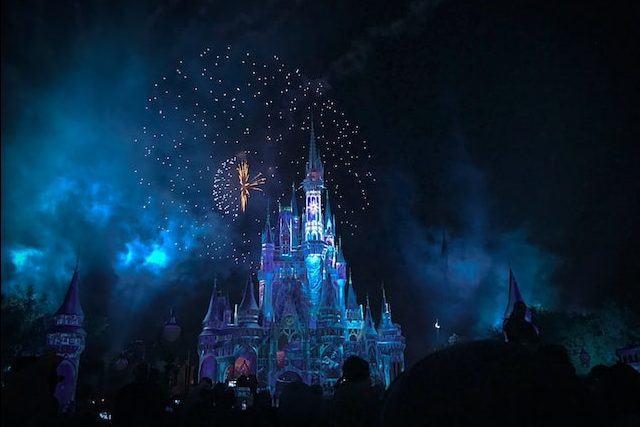Before we get into the specifics of Disney, let’s understand competitor analysis. Competitor analysis is a strategic research method companies use to identify, evaluate, and understand their current and potential competitors within the market. It’s an essential business strategy component and instrumental in understanding the industry landscape.
The process usually involves the following steps:
- Identifying Key Competitors: The first step is to identify who your competitors are. These may be direct competitors (those who offer the same or similar products or services as you) or indirect competitors (those who provide different products or services but compete for the same consumer dollar).
- Analyzing Competitors’ Strategies and Objectives: Once competitors are identified, the next step is to understand their business strategies and objectives. This may involve analyzing their marketing materials, financial performance, customer reviews, or any public information available about the company.
- Assessing Competitors’ Strengths and Weaknesses: This step involves evaluating the identified competitors’ strengths and weaknesses. Strengths include unique products or services, strong brand recognition, and superior customer service. Weaknesses include poor product quality, weak customer service, or high prices.
- Understanding Competitors’ Products/Services: Understanding what your competitors offer and how your products or services compare is important. This could involve looking at features, quality, pricing, customer service, and marketing strategies.
- Observing Competitors’ Reaction Patterns: Some companies react more aggressively than others when faced with competition. Understanding these patterns lets you predict how these companies might respond to your business strategies.
- Drawing Conclusions and Formulating Strategy: The final step is to take all the information gathered from the analysis, draw meaningful conclusions, and use those to formulate or adjust your business strategies.
The main goal of a competitor analysis is to understand the competitive landscape, spot opportunities and threats, and position your company most advantageously. It helps to inform strategic decisions, from product development to marketing and sales efforts. Now, let’s do a competitor analysis of Disney.
Here is the competitor analysis of Disney
Disney, known for its entertainment and media empire, faces competition from various companies across different sectors. Here are some notable competitors:
Universal Studios
- Theme Parks and Resorts
- Innovative Attractions: Disney continuously updates and introduces new attractions in its theme parks based on popular Disney franchises. This innovation keeps their parks fresh and appealing.
- Immersive Experiences: Disney parks are known for their immersive experiences, with attractions often featuring intricate storytelling and attention to detail, enhancing the guest experience.
- Global Presence: Disney has theme parks worldwide, including in the U.S., Europe, and Asia. This global reach allows them to attract a vast and diverse audience.
- Intellectual Property
- Strong Franchises: Disney owns many popular franchises like Marvel, Star Wars, and Pixar, which they leverage in their theme parks, movies, and merchandise.
- Character Integration: Disney more extensively incorporates its characters into the park experience, creating themed areas like Star Wars: Galaxy’s Edge and Marvel-themed zones.
- Brand Loyalty and Marketing
- Brand Recognition: Disney’s brand is globally recognized and often associated with family-friendly entertainment, which helps in attracting a wide range of visitors.
- Cross-Promotion: Disney uses its films, T.V. shows, and merchandise to promote its theme parks and vice versa, creating a synergistic effect.
- Diversification and Expansion
- Beyond Theme Parks: Disney’s business is highly diversified, including film production, T.V. channels, streaming services (Disney+), and merchandise, which supports its theme park business.
- Continuous Expansion: Disney is continuously expanding and upgrading its parks. For example, the recent addition of Star Wars: Galaxy’s Edge in Disneyland and Disney World is a significant draw.
- Customer Experience
- Service Quality: Disney is renowned for its high-quality customer service, which enhances visitors’ overall experience.
- Technology Integration: Disney has invested in technology like the Disney MagicBand and the My Disney Experience app to streamline park visits, making them more convenient for guests.
- International Appeal
- Cultural Adaptation: Disney adapts its parks and offerings to suit local cultures and tastes in international locations, such as Disneyland Paris and Shanghai Disney Resort.
- Media and Entertainment
- Film and T.V. Content: Disney’s strong presence in film and television ensures a continuous supply of new content and characters that can be integrated into their theme parks.
Warner Bros. Entertainment
- Film and Television Production
- Diverse Franchises: Disney owns a wide range of popular franchises like Marvel, Star Wars, and Pixar, which are major draws at the box office. They compete with Warner Bros.’ D.C. Comics adaptations, the Harry Potter series, and other Warner Bros. films.
- Animation Dominance: Disney has long been a leader in the animated film market with its traditional animation and Pixar’s computer animation. They compete with Warner Bros.’s animation offerings, including titles under Warner Animation Group.
- Streaming Services
- Disney+ vs HBO Max: Disney+ competes directly with Warner Bros.’ HBO Max. Disney+ offers a vast library of Disney classics, Marvel and Star Wars content, and original series. In contrast, HBO Max offers various Warner Bros. movies, HBO series, and original content.
- Original Content: Both companies invest heavily in original content for their streaming platforms, aiming to attract and retain subscribers with unique, high-quality productions.
- Intellectual Property and Brand Strength
- Franchise Utilization: Disney leverages its franchises across movies, T.V. shows, merchandise, and theme parks. Warner Bros. does the same with its properties, creating an extensive ecosystem around each franchise.
- Brand Recognition and Loyalty: Disney and Warner Bros. have strong brand recognition and loyal fan bases for their respective franchises, which they leverage to compete in various markets.
- International Reach
- Global Distribution: Both companies distribute their films and T.V. shows worldwide, competing for international box office and viewership.
- Localization Strategies: They adapt their content for international markets to maximize appeal and relevance in various cultural contexts.
- Merchandising
- Character Merchandising: Disney and Warner Bros. have extensive merchandising strategies, capitalizing on their popular characters and franchises through toys, clothing, and other products.
- Thematic Expansions and Partnerships
- Theme Parks and Experiences: While Disney is a dominant player in theme parks, Warner Bros. also capitalizes on its properties by creating themed attractions and experiences in various parks and venues worldwide.
- Technology and Innovation
- Technological Advancements: Both companies invest in technological advancements in filmmaking and content delivery, such as streaming technologies, special effects, and animation techniques.
- Media Networks and Broadcasting
- T.V. Channels and Networks: Disney and Warner Bros. own and operate various T.V. channels and networks, broadcasting a wide range of content, from news to entertainment.
DreamWorks Animation
- Rich Portfolio of Animated Films
- Iconic Characters and Stories: Disney’s animated films, both from its studios and Pixar (which it owns), feature many beloved characters and stories. This competes with DreamWorks’ popular franchises like “Shrek,” “Madagascar,” and “How to Train Your Dragon.”
- Diverse Themes and Genres: Disney offers a variety of themes and genres in its animated films, appealing to a broad audience. DreamWorks also explores diverse themes, but Disney’s extensive history and catalog give it a competitive edge.
- Quality and Innovation in Animation
- Pioneering Animation Techniques: Disney has a long history of innovation in animation, from traditional hand-drawn techniques to advanced CGI. DreamWorks also has a reputation for high-quality CGI animation, but Disney’s continuous innovation keeps it at the forefront.
- Technical Excellence and Artistic Merit: Both studios are known for their high production values and artistic achievements in animation. However, Disney often leads in terms of technical advancements and industry recognition.
- Franchise Expansion and Merchandising
- Expanding Beyond Films: Disney effectively turns its animated films into franchises, extending them through sequels, T.V. shows, merchandise, theme park attractions, and more. DreamWorks also capitalizes on its franchises, but Disney’s broader ecosystem offers more extensive opportunities for expansion.
- Merchandising and Licensing: Disney’s merchandising strategy is highly effective, utilizing its characters and stories in a wide range of products. DreamWorks also has successful merchandising, but Disney’s global brand and a more comprehensive array of iconic characters give it an advantage.
- Brand Recognition and Loyalty
- Global Brand and Heritage: Disney’s brand is globally recognized and has a storied history, fostering a strong sense of nostalgia and loyalty among audiences of all ages. DreamWorks, while popular, has a different level of historical brand recognition.
- Emotional Connection: Disney’s films often emphasize emotional storytelling, which has helped build a loyal fan base. DreamWorks tends to focus more on humor and adventure, offering a different style that competes with Disney’s approach.
- Strategic Partnerships and Distribution
- Global Distribution Networks: Disney’s distribution network is vast, enabling wide-reaching global releases of its animated films. DreamWorks also has strong distribution, but Disney’s network is more extensive.
- Collaborations and Partnerships: Disney collaborates with various companies and entities to expand its reach and impact, benefiting its animation division. DreamWorks engages in partnerships as well, though on a different scale.
- Streaming and Digital Platforms
- Disney+ and Streaming Content: With the launch of Disney+, Disney has a dedicated platform to showcase its vast library of animated films, including exclusive content. DreamWorks also streams its content on various platforms, but Disney+ gives Disney a direct channel to its audience.
Sony Pictures Entertainment
- Film Production and Distribution
- Diverse and Popular Franchises: Disney owns many successful franchises, including Marvel, Star Wars, and Pixar. With franchises like Spider-Man and its associated universe, Sony Pictures competes in the same space.
- Box Office Presence: Both companies strive for solid box office performances. Disney often leads with blockbuster releases, but Sony competes effectively with its significant films, including collaborations within the Marvel universe.
- Animation
- Animation Studios: Disney, through its studios and Pixar, is a leader in animation. Sony Pictures competes with its animation division, Sony Pictures Animation, known for films like the “Hotel Transylvania” series and “Spider-Man: Into the Spider-Verse.”
- Innovative Animation Techniques: Both companies invest in innovative animation technologies to enhance their animated films’ visual appeal and storytelling.
- Streaming and Digital Services
- Disney+ vs. Sony’s Distribution Channels: Disney+ offers a direct-to-consumer platform featuring Disney’s extensive library. Sony, while not owning a proprietary streaming service, licenses its content to various platforms and benefits from digital sales and rentals.
- Content Strategy: Disney+ leverages Disney’s existing franchises and creates original content. Sony Pictures, meanwhile, focuses on strategic partnerships for content distribution, such as its deals with Netflix and Disney for post-theatrical release streaming.
- Television Production
- T.V. Networks and Shows: Disney owns several T.V. networks and produces numerous T.V. shows, both live-action and animated. Sony Pictures Television produces many successful T.V. content for various networks and platforms.
- Global Reach in Television: Both companies produce and distribute content globally, tailoring their offerings to suit diverse international markets.
- Intellectual Property Utilization
- Franchise Expansion and Merchandising: Disney extensively uses its I.P. in merchandising, theme parks, and other areas. Sony Pictures leverages its I.P. in various ways, though on a different scale than Disney’s extensive cross-platform integration.
- Brand Recognition and Marketing
- Strong Brand Identities: Disney is renowned for its family-friendly and iconic content. Sony Pictures has a diverse portfolio includes family-oriented content and more varied and adult-themed productions.
- Marketing Strategies: Both companies employ extensive marketing campaigns for their major releases, using traditional and digital media platforms to reach broad audiences.
- Innovation and Technology
- Technological Advancements: Disney is known for its technological innovation in filmmaking and entertainment. Based on Sony’s technological prowess, Sony Pictures invests in advancing film technology and production techniques.
- International Distribution and Localization
- Global Distribution Networks: Both companies have strong international distribution networks, allowing them to release films and T.V. shows worldwide.
- Local Content Production: Disney and Sony Pictures produce and acquire local content in key international markets to cater to regional tastes and preferences.
Streaming platforms
Disney competes with major streaming platforms like Netflix and Amazon Prime Video primarily through its streaming service, Disney+, as well as its strategic content offerings and brand strength. Here’s an overview of how Disney navigates this competition:
- Disney+ as a Direct Competitor
- Exclusive Content: Disney+ offers a vast array of exclusive content from Disney’s significant franchises like Marvel, Star Wars, and Pixar, as well as classic Disney films and series.
- Original Productions: Disney+ invests heavily in original content, producing series and films exclusive to the platform, aiming to match or surpass the appeal of Netflix and Amazon Prime Video’s originals.
- Strong Brand and Franchise Appeal
- Family-Friendly and Iconic Content: Disney’s brand is synonymous with family-friendly content, which gives it an edge in attracting families and fans of its iconic franchises.
- Leveraging Popular Franchises: Disney capitalizes on its popular franchises by offering an extensive collection of related content, drawing in loyal fans.
- Strategic Content Library
- Extensive Content Catalog: Disney’s vast library of films, television shows, and animated features, including content from its acquisitions (like 20th Century Fox), provides a competitive edge.
- Windowing and Release Strategies: Disney has been adjusting its release strategies, including simultaneous releases on Disney+ and in theaters, to compete with the flexibility offered by other streaming services.
- Global Expansion and Localization
- International Availability: Disney+ is rapidly expanding to new markets worldwide, competing with Netflix and Amazon Prime Video’s global presence.
- Localized Content: Disney+ is investing in local content in various regions to attract a broader international audience, an effective strategy for Netflix and Amazon.
- Competitive Pricing and Bundling
- Subscription Plans: Disney+ offers competitive pricing, often lower than its rivals, making it an attractive option for consumers.
- Bundling with Other Services: Disney offers bundles that include Disney+, Hulu, and ESPN+, providing a comprehensive package that competes with the diverse content available on Netflix and Amazon Prime Video.
- Technological Innovation and User Experience
- Platform Technology: Disney+ focuses on providing a user-friendly platform with robust technology, essential for competing in the streaming space.
- Content Discovery and Personalization: Like Netflix and Amazon, Disney+ invests in algorithms for personalized content recommendations, enhancing user experience.
- Marketing and Brand Partnerships
- Cross-Promotion with Other Disney Segments: Disney leverages its theme parks, merchandise, and theatrical releases to promote Disney+.
- Strategic Partnerships: Collaborations with other companies for promotions and exclusive offers help reach a wider audience.
- Intellectual Property Rights and Licensing
- Control Over I.P. Licensing: Disney’s control over its extensive I.P. allows it to decide what content appears on its platform instead of licensing it out to other streaming services.











